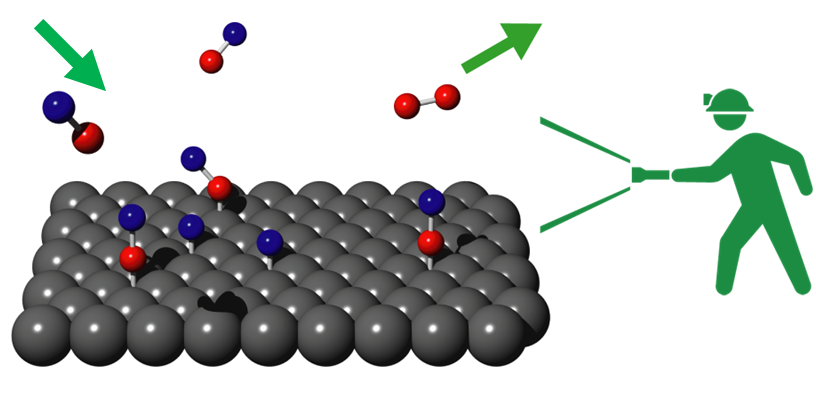Overview

Solid Surfaces
固体表面は、固体と気体や液体が出会う特殊な場所であり、表面固有の様々な現象が生じます。機能性材料の表面における化学反応は、表面特異的な現象の一つと考えられており、触媒合成、エネルギー変換、環境浄化、センサーなど、様々な化学プロセスに利用されています。このような表面反応のメカニズムを解明することは、表面物理化学の基礎的な理解の進展に寄与し、より高効率な先端機能材料の開発を可能にすると期待されます。そのため、多くの表面敏感法を用いて、表面反応の研究が盛んに行われています。
Solid surfaces are special places where solids meet gas and/or liquid and various surface-specific phenomena take place. Chemical reactions at surfaces of functional materials are considered as one of surface-specific phenomena and have been used for a wide variety of chemical processes such as catalytic synthesis, energy conversion, environmental cleanup, sensor and so on. The elucidation of mechanisms of the surface reactions contributes to the progress of fundamental understanding in surface physical chemistry and enables us to develop advanced functional materials with higher efficiencies. For this purpose, surface reactions have been extensively studied by a large number of surface sensitive techniques.
In situ / Operando Observations
それぞれの表面反応には、吸着、拡散、結合形成、脱離など、いくつかの素過程があることが知られています。表面科学技術は、原子レベルの表面化学種の情報を収集する能力を持ち、素過程の構造・化学解析の一翼を担っています。従来は、表面反応を素過程に分割し、超高真空下で単結晶表面を用いて各過程を詳細に調べる研究が主流でした。しかし、多くの場合、表面反応には複数の素過程が同時に寄与し、互いに絡み合っています。そのため、表面反応機構を真に理解するためには、表面反応の全過程をその場観察することが望まれています。
Each surface reaction usually involves several elementary steps such as adsorption, diffusion, bond formation and desorption. Surface science techniques have capabilities to collect information on surface species at the atomistic level and play a role in structural and chemical analyses for the elementary step.In the past surface the surface reaction was divided into elementary steps and each step was studied in detail using a single crystal surface under ultrahigh vacuum (UHV) conditions. However, in most cases, multiple elementary steps contribute to the surface reaction simultaneously and intertwine with each other. Therefore to understand the surface reaction mechanism, it is desirable to observe the whole surface reaction process with in-situ observation techniques.


